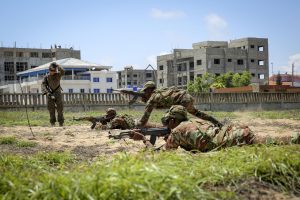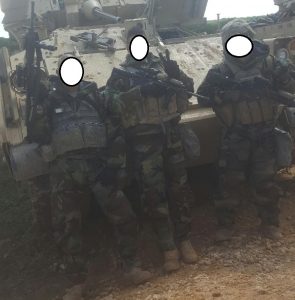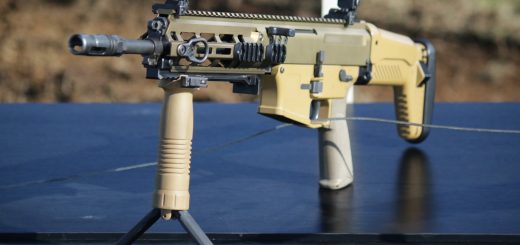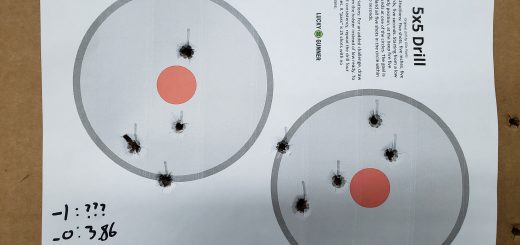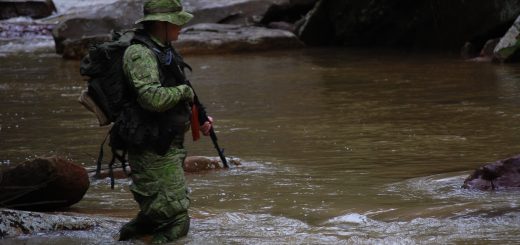Basic Tactics for Basic Kommando Part II
Now that we have looked into individual movement, we can look into using friends (implying you even have any) to augment your tactics. For now, we will assume you only have one friend to depend on, so we will analyze what is referred to colloquially as buddy team tactics.
The most fundamental buddy team tactic is bounding. Bounding, also known as leapfrogging, is defined as “a movement from one position to the other in which a leading element, covered by a trailing element, moves to a predesignated limit.” (Combat Leader’s Field Guide, pg 19) In layman’s terms, one man watches for any enemies while the other moves. Bounding is considered one of the more fundamental movements done in groups; it can be done at the buddy team, fire team, squad, and platoon levels.
To execute the bound:
- You and your buddy take contact from the front, immediately you both seek cover and return fire.
- You make it known to your buddy that you wish to bound, and call out a phrase like “cover me while I move”.
- Your buddy acknowledges, and will begin to suppress the enemy element using accurate and deliberate fire.
- This is the cue for the initiating element (you) to run up to a closer piece of cover to your destination (FYI, this can be done using any individual movement techniques)
- Once you reach your cover, you call out to your buddy that you are set in place, and begin to engage.
- Your buddy will “bound” up, using individual movement techniques, and reach a position of cover.
- He will announce that he is set, and begin to engage the enemy element.
- Repeat bounds until objective is complete.
There are two types of bound, the successive bound and the alternate bound. The successive bound is characterized by the bounding elements bounding to a more or less parallel position when advancing. When Rifleman A bounds to a tree, Rifleman B will bound to a tree roughly in line with Rifleman A’s tree. At that point, Rifleman A will bound again, and once he is set Rifleman B will bound to a piece of cover again roughly parallel to Rifleman A. The alternate bound is slightly different. When Rifleman A bounds up to cover, he will call set, allowing Rifleman B to bound up. However, instead of bounding up to cover parallel to Rifleman A, he will keep going farther, and will set behind cover perpendicular to Rifleman A, instead of parallel.
Both types of bounds have their uses. Successive bounding is good when part of a larger element, and you want to ensure good control at a moderate pace, be it fear of overextension or a high volume of enemy fire. Alternate bounding works well when you need to gain ground rapidly on the enemy and the terrain permits it. These choices will have to be made on the ground, and are at the team’s discretion.
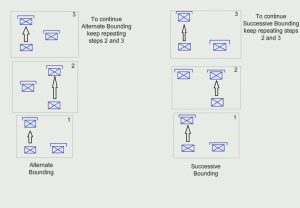
Much easier than my dribble, and would probably save you time too. Sourced from unitedoperations.net
Alright, now let’s say no one is shooting at you. There are three movement techniques that are used based off of overall danger and necessity for speed. While mostly done at the squad levels and up, they can be tailored to the buddy team.
The first movement technique we will look at is travelling. Its used when any contact with the enemy forces is unlikely, and you need to be fast. You and your buddy move uninterrupted as a unit, probably in a file, bearing terrain considerations in mind.
When there is a chance of any enemy contact, but you want to keep a pretty good modicum of speed, then you can employ travelling overwatch. It differs from travelling in that the buddy team is slightly split up, with one as the lead and the other trailing behind at different distances and speed. The trail person may sometimes stop and watch over (hence “travelling overwatch) the lead person when they feel its necessary. This allows for suppression for the lead person to bound back, or for the overwatch to maneuver in support of the lead element.
Now when there is a pretty substantial chance of enemy contact, you should employ bounding overwatch. Breaking it down autist style, its basically bounding everywhere, but with longer bounds since you aren’t being shot at. I shouldn’t have to say this, but I will: you don’t shoot during bounding if there is nothing to shoot at.
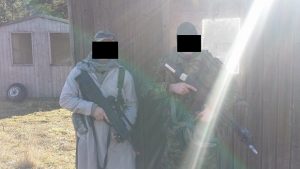
ALWAYS bring a friend. You’ll never regret it. Even if they did shoot at you.
That’s it for this hypothetical friend talk. In Part 3, we will look at fireteam and squad tactics and how to employ them. If you thought finding one friend was bad, I have some horrible news for you.
All of the info above was either taught to me or sourced from a few books. These books include: The Ranger Handbook (2011 Edition)and the Combat Leader’s Field Guide (10th Edition).
